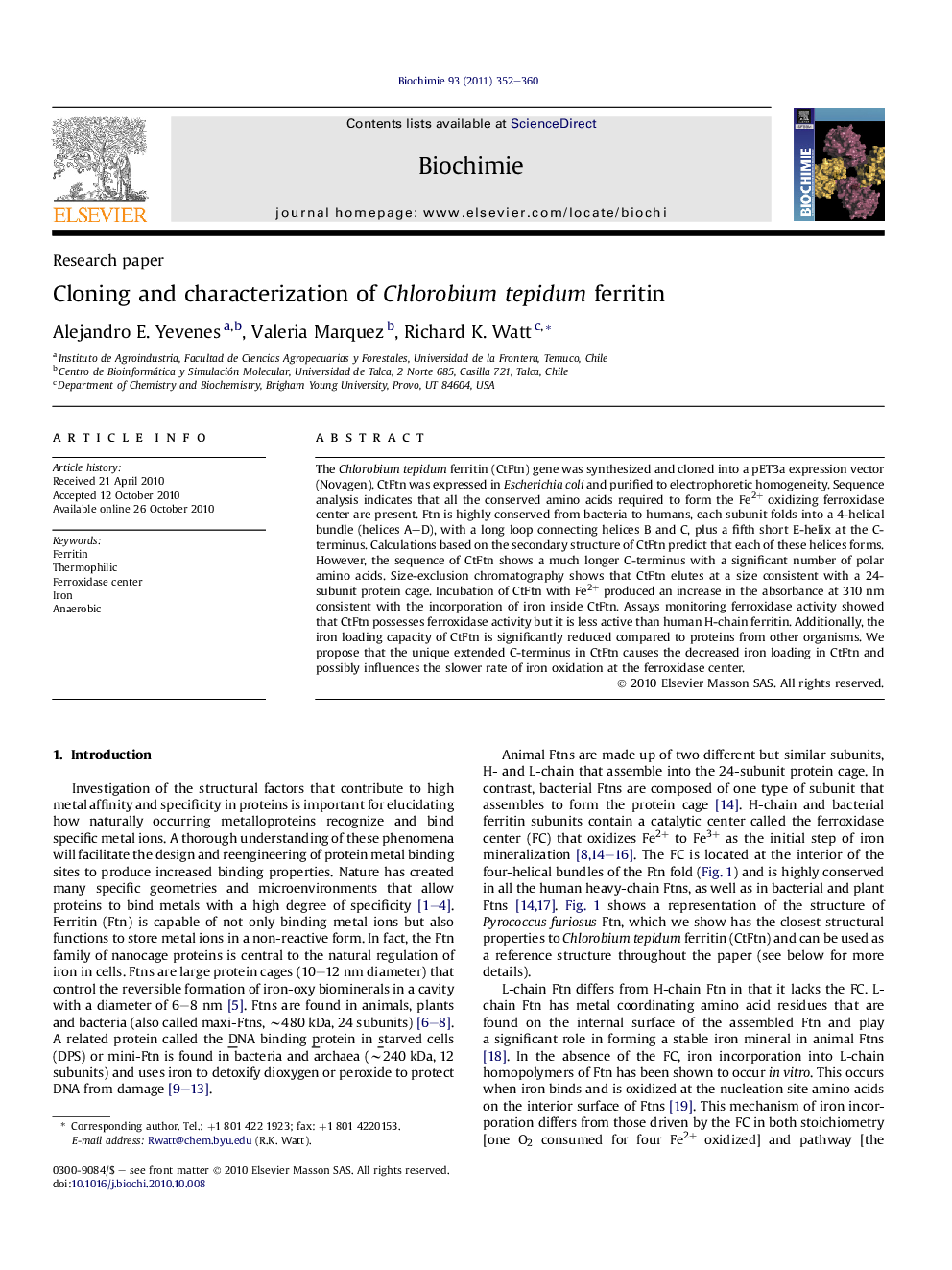| Article ID | Journal | Published Year | Pages | File Type |
|---|---|---|---|---|
| 1952519 | Biochimie | 2011 | 9 Pages |
The Chlorobium tepidum ferritin (CtFtn) gene was synthesized and cloned into a pET3a expression vector (Novagen). CtFtn was expressed in Escherichia coli and purified to electrophoretic homogeneity. Sequence analysis indicates that all the conserved amino acids required to form the Fe2+ oxidizing ferroxidase center are present. Ftn is highly conserved from bacteria to humans, each subunit folds into a 4-helical bundle (helices A–D), with a long loop connecting helices B and C, plus a fifth short E-helix at the C-terminus. Calculations based on the secondary structure of CtFtn predict that each of these helices forms. However, the sequence of CtFtn shows a much longer C-terminus with a significant number of polar amino acids. Size-exclusion chromatography shows that CtFtn elutes at a size consistent with a 24-subunit protein cage. Incubation of CtFtn with Fe2+ produced an increase in the absorbance at 310 nm consistent with the incorporation of iron inside CtFtn. Assays monitoring ferroxidase activity showed that CtFtn possesses ferroxidase activity but it is less active than human H-chain ferritin. Additionally, the iron loading capacity of CtFtn is significantly reduced compared to proteins from other organisms. We propose that the unique extended C-terminus in CtFtn causes the decreased iron loading in CtFtn and possibly influences the slower rate of iron oxidation at the ferroxidase center.
Research highlights► Ferritin was cloned and purified from the thermophilic anaerobe Chlorobium tepidum. ► Chlorobium tepidum ferritin has an extended C-terminus. ► Ferroxidase activity was observed. ► Limited iron loading was observed. ► The extended C-terminus may influence iron loading capacity.
